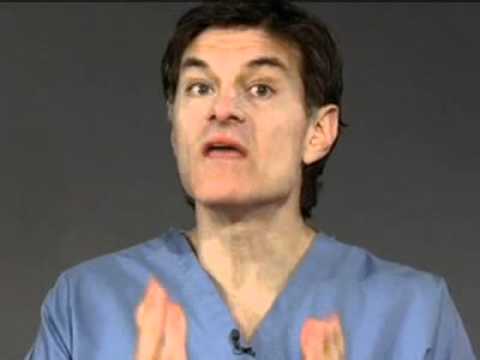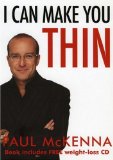How to Eat and Lose Weight
Did you know that you can eat good food and lose weight? It probably sounds too good to be true, right? Changing what and how you eat will improve your overall health, help you lose weight, and make you feel better everyday. Throw in some exercise to really maximize the benefits!
Steps
Part 1 Eating the Right Food
-
1
Eat more fresh food. Choose fresh, nutrient-rich, healthy, low-fat foods.
- Adding a lot of vegetables and fruits to your diet will help you. One way to add more fruits and veggies to your diet, cut calories, and still enjoy the foods you love is to add or "hide" veggies to dishes. Researchers have found that adding pureed vegetables to dishes (e.g., cauliflower to mac and cheese) helped people eat a few hundred calories less of the dishes.[1] Veggies add but bulk to a dish but not really a ton of extra calories.
- Get a lot of color on your plate. Make sure your meals have lots of colors; the best way to do this is by adding lots of fresh produce, from eggplant to beets to kale to yellow peppers. This color blocking usually helps you eat more produce and makes the meal look appetizing and appealing at the same time![2]
-
2
Eat foods high in fiber. Fiber-rich foods keep you full for longer, so that you don't reach for unhealthy snacks that will only make you gain weight.
- Beans, for example, are filling, high in fiber and are an excellent source of protein. They're also slow to digest, meaning that you feel satisfied for a while (which may in turn stop you from eating more!)[3]
-
3
Skip the juices, eat the fruit. Instead of drinking juices or smoothies, which tend to be high in calories, opt instead to eat a whole piece of fruit, like an apple.[4]
- Eating a whole piece of fruit fills you up more than juice because raw fruit has more fiber. In addition, the act of chewing the fruit communicates to the brain that you've eaten something substantial.[5]
-
4
Eat foods that contain a lot of water, like fruits and vegetables. Studies have shown that people who eat foods with high water content have lower body mass indexes. The water in these foods helps keel you full for longer so you eat less overall.[6]
- Watermelon and strawberries have about 92 percent water per volume. Other fruits with high water content include grapefruit, cantaloupe, and peaches. Remember, though, that many fruits are high in sugar, so try to limit how much fruit you eat daily. [7]
- For vegetables, cucumber and lettuce have the highest water content at 96 percent. Zucchini, radish and celery have a water content of 95 percent.
- 5 Include foods which burn fat for you. By choosing your foods carefully, you can drop the pounds without going hungry. There are many foods out there that are proven to help you to lose weight, foods such as chilli, green tea, berries and whole grain, can do various things to help you to drop the pounds, by avoiding insulin spikes and keeping your metabolic rate going.
- 6 Add good fats to your diet. Monounsaturated fats have been clinically proven to help you burn fat, especially in your midsection. So, add foods like avocados, kalamata olives, olive oil, almonds, walnuts, and flaxseed to your diet, and watch the weight fall right off you.[8]
-
7
Eat superfoods. Superfood is a term sometimes used to describe food with high nutrient content that some believe confers health benefits as a result. Some superfood claims are supported with scientific evidence, while other claims make some foods hugely popular even though they have few proven benefits.[9]
- Quinoa, for example, is a legitimate superfood because it is a complete protein (meaning it has all eight of the essential amino acids we need for our tissues). In addition, quinoa has more protein than most cereal grains and is higher in calcium, phosphorus, magnesium, potassium, and iron than other grains like wheat and barley.[10]
- Just make sure to do you research before deciding on adding certain alleged "superfoods" to your diet.
-
8
Avoid unhealthy food with empty calories. "Empty calorie" foods are those which have calories (from sugar and/or solid fats) but little to no nutritional value. [11]
- Foods and beverages that provide the most number of empty calories for Americans include cakes, cookies, pastries and donuts, sodas, energy drinks, fruit drinks, cheese, pizza, ice cream, bacon, hot dogs and sausages. With some of these, you can find alternative versions. For example, you can purchase low-fat hot dogs and low-fat cheese at grocery stores. You can also have sugar-free drinks. In other foods, like candy and regular soda, all the calories are basically empty.[12]
-
9
Eat more soups. Soups are relatively low in calories. Moreover, if you start with a soup, you will probably eat less of the main meal.[13]
- Stick to soups with a broth base and of around 100-150 calories per serving. You can choose either chunky or pureed soups, just avoid soups with added cream. [14]
-
10
Feed your temptations once in a while. Go ahead and have the odd doughnut or slice of pizza. Indulging in occasional craving will help ward off any binging episodes. If you really feel a hankering for something, have just a little bit. Remember that the more you restrict yourself, the greater the draw to the restricted item.
- Try eating a bowl of raw veggies or drinking a full glass of water before you indulge. Doing this will fill you up and leave you with less room to overindulge on your treat.
Part 2 Eating the Right Way
-
1
Eat slowly. Your brain takes around 20 minutes to register feelings of fullness, suggesting that you need to slow down so that your brain can properly communicate those feelings.
- If you don't feel full immediately after a meal, wait. The chemicals your brain releases when you eat or drink take time to rise and to communicate that sense of fullness. As the chemicals increase, your hunger dissipates; this is why you should pause for a little bit after eating and before having a second helping.
-
2
Use utensils and sit at a table when eating. Eating with your hands will mean that you take in more food in one scoop.
- Studies also show that people who eat with larger utensils eat less than those who eat with smaller utensils.[15]
-
3
Stop eating when you feel full. When you feel comfortably satiated after eating, stop and put your utensils and napkin on the plate to signal that you're finished. This is also a signal to yourself that you're done with your meal as well as to those around you.
- Remember, you don't have to eat all of your meal once you feel satisfied. Eat until you are 80% full. No one should feel stuffed and sick after eating.[16]
-
4
Drink more water. Often we mistake thirst for hunger which means we eat when it's not necessary. By keeping yourself well hydrated you'll feel hungry less as well as getting a clearer complexion and shinier hair.
- If you're not sure what you're feeling is actually hunger, try drinking a big glass of water and then wait a few minutes. If you don't feel hungry anymore, it's because your body was actually in need of water, not food.[17]
-
5
Record what you eat. This is a simple yet very powerful exercise to open your eyes to see whether you are keeping up with your food plan. Often, we tend to overlook the snacking we do between meals and instead think our diet is not working. really think that our diet is failing us. Most people underestimate their daily intake by about 25 percent.[18]
- You might also discover useful information about your daily habits and a reality check about how many calories you actually consume. Once you know your habits and patterns better, you can begin to address problem behaviors that are hindering your progress.[19]
- Keeping a journal also makes you more accountable.
-
6
Learn how to manage eating out. Eating in restaurants or at other people's homes can be a real challenge. You want to eat, but you also don't want to eat the wrong things and risk backtracking on your progress.[20]
- Choose foods that are steamed, grilled, broiled or baked instead of fried. Avoid dishes that are labeled as "breaded", "crispy" or "battered" – these are code words for "fried".
- Don't be afraid to ask for modifications. For example, ask to swap out potatoes or bread for a side salad. Request sauce on the side of chicken or other entrée, rather than smothered on top. This will enable you to still eat something delicious but without all of the extra calories.[21]
- If the restaurant is known for especially large portion sizes, opt to split something with a friend.[22]
- To avoid overeating when going out, eat a small and healthy snack at home beforehand. Try some carrots and hummus or an apple. A small snack before hand will curb your hunger and keep your head Grab a small snack before heading to restaurants. This will curb off your hunger and keep your head clear while you make healthy and informed choices from the restaurant's offerings.
- Pack away food. At the beginning of the meal, ask for a doggie bag, and put what you aren't going to eat in the bag.
- When ordering salads, always ask for dressings and sauces on the side. Lots of dressings can be very fatty and full of calories. Your seemingly "healthy choice" can pack as many calories as a burger if it’s swimming in a fatty dressing. Be also wary of other high-calorie additions like bacon bits and cheese.[23]
-
7
Expect to cheat once in a while. You might overeat one night. You might have a bad day where you indulge in way too much junk food. Just don't despair when you realize you've strayed from your goals. It took you a lifetime to achieve your current weight, and it will take time to achieve your new weight and size goal.
- To keep up your optimism, reward yourself for meeting smaller goals. For example, buy yourself a small token or treat every time you lose another five times. The prospect of the reward will eventually become its own form of motivation.
-
Basic Weight loss & Diet Tips (21 to 30)
21. Count the calories as you eat. It’s
-
How To Shrink Your Weight: Tips And Tricks
TIP! Try to stay off the diet bandwagon. Avoid fad diets if y
-
Watch The Weight Drop Off Your Body
Wanting to lose unwanted pounds is common among many people. Amon
-
Walking For Fitness And Weight Loss And Better Health
Starting a walking for fitness and weight loss program may be the ver
-
Helpful Weight Loss Advice You Won’t Read Anywhere Else
TIP! A great way to lose weight is to simply stay active. Thi
-
6 Weight Loss Secrets Skinny Women Use To Stay Slim.
Skinny women eat all the time but never too much... Skinny women eat
- DON'T MISS
- Should You Consult a Doctor for Weight Loss?
- Is Your Diet Making You Gainvar zeus = zeus
- Basic Weight loss & Diet Tips (1 to 10)
- 8 Common Hormonal Imbalances That Are At The Root Of Weight Gain
- Great Advice If You Want To Lose Weight
- Would You Measure Every Single Thing Youll Ever Eat For The Rest Of Your Life If It Means The End Of Your Food Addiction?
- Weight Loss Tips To Help You Get The Body You Have Always Dreamed Of
- Safe Modes Of Dieting For Weight Loss
- How to Lose Weight Working Nights
- Proven Weight Loss Strategies That Are Successful




